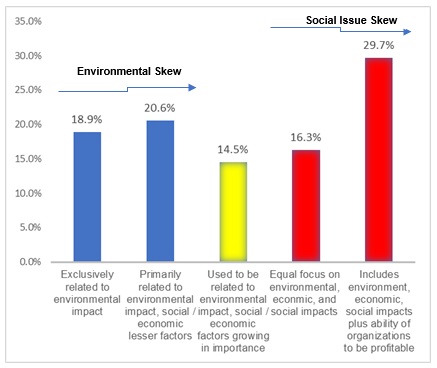
Products Carbon Footprint as a Point of Differentiation
To be listed in the grocery sector it is necessity brands offer a unique point of differential. No, price and taste are not points of difference. This is not so more evident than today given the pandemic and how consumer shopping habits have changed. Whether the product was organic or plant-based certified to being a unique entry into the category to the product being a clean label, they are worthy points of differential. However, a new point of differentiation is coming to light in the grocery sector. That of identifying the product’s carbon footprint. While climate change remains a polarizing topic for many, Canadian perceptions are changing. A spring 2018 study undertaken by Global Attitudes found 66% of Canadians view climate change as a major threat to the well-being of the country. In Greece, that figure was 90%.[i]

Welcome to Products Carbon Foot Print as a Point of Differentiation!
In a study undertaken by Nielsen in 2017, the 5th key factor as to why Canadians were following a plant-based diet was “concerns about environmental protection”. 21% of Canadians cited this reason. [ii] “Overall, animal-based foods tend to have a higher footprint than plant-based. Lamb and cheese both emit more than 20 kilograms CO2-equivalents per kilogram. Poultry and pork have lower footprints but are still higher than most plant-based foods, at 6 and 7 kg CO2-equivalents, respectively”.[iii]
Consumers’ interest in environmentally, sustainable food products is on the rise as noted by Global Data, London-based market research. Citing research, it released Dec 2020, 41% of European consumers consider a reduced environmental footprint to be more important now than before the pandemic[iv].
Similar results were cited by C.O.nxt and Menu Matters. As part of their research study of the American consumer, they revealed:
- More than 80% of consumers said sustainability is an important factor when deciding what food and beverage to purchase from grocery stores or order from restaurants.
- More than half said they are “somewhat” or “significantly” more concerned about sustainability compared to a year ago.
- More than half of consumers said they would “definitely” or “probably” be willing to pay more for sustainable food and beverages.
Concerns about sustainability were highest among consumers ages 18 to 44, with more than a third rating it as “extremely important.[v]
So, what is the definition of sustainability? Chart 1 provides an overview of consumers’ insights.
Chart 1
Sustainability Definition Focus[vi]

* Nearly half of consumers now tie social and economic issues into sustainability
Carbon labeling is becoming a growing trend as a way for brands to differentiate themselves. Several companies are now offering consumers a way to see the full footprint of their product on the packaging label. The Canadian House of Commons just passed a private member’s motion calling for a green grading system. It calls for food products in Canada to be labeled so consumers can see their impact on the environment. “When we’re looking at environmental labeling, we’re not looking at our personal health, but our environmental health, which I think is interconnected in a lot of ways”.[vii]
[i] A Look at How People Around the World View Climate Change, www.pewresearch.org, April 2019
[ii] Why Plant-Based Proteins? Yves Strategic Leadership, 2019, Grocery Business Magazine
[iii] You Want to Reduce the Carbon Footprint of Your Food? Focus on What You Eat, Not Whether Your Food is Local. www.ourworldindata.org, January 2020
[iv] Carbon Footprint Labelling as Point of Differentiation, www.foodbusinessnews.net, February 2021
[v] Consumer Interest in Sustainability is Still Growing, www.foodbusinessnews.net, February 2021
[vi] Consumer Interest in Sustainability is Still Growing, www.foodbusinessnews.net, February 2021
[vii] How Green is Your Grocery List? N.S. MP Proposes Environmental Label on Products, www.cbc.ca, February 2021





